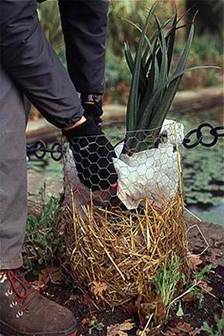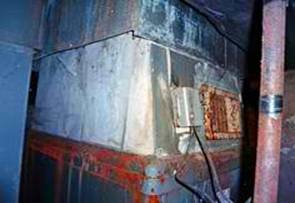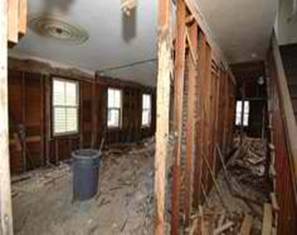Why Damaged Insulation Needs to Be Removed
by Mark Row
 The Importance of Removing Damaged Insulation
The Importance of Removing Damaged Insulation
A properly insulated home equals a healthy and well protected home. That is something that everyone should bear in mind when considering investing into their home. Although sometimes expensive and time consuming, installing insulation onto surfaces that need protection the most can be very cost effective on the long run. Not only will it lower your bills but also create a healthy and safe environment for you and your family. However, just like all other things, insulation materials also have their expiration date meaning that although some products are very durable, they will have to be replaces every once in a while. Not only does old, damaged insulation does not have the function it should, but it can also pose a threat for your health. This is only one reason why damaged insulation needs to be removed.
If you are buying a home, it is very important to conduct a detailed inspection of your home and this especially applies to insulation. Namely, it might easily be the case that your house already has some insulation material installed that has been recently installed and is in good shape, thus needs not to be replaced but only amended. Since building regulation in the UK set the required values of insulation (R and U values of an insulation material) for specific areas within your home (like your attic or floor) you will need to check whether these requirements are fulfilled, since these values have changed (read increased) over the years, so it is most likely that, if you are buying an old house, the existing insulation will not be enough and it will have to be supplemented. This is potentially a good thing since it will lower your costs. On the other hand if it is in bad shape, existing insulation will have to be properly removed and new insulation material added.
Steps in Removing Insulation
One potential way of determining whether you have any insulation installed and whether it has to be removed is hiring a professional to do the job for you. This is always the safest solution since professional contractors have the required equipment, knowledge and experience to take all the needed precautions. However, this is also the priciest solution so if you are not willing to pay for this, you could try doing it yourself. What follows are some steps in removing damaged insulation within your home:
- The first and probably the most important thing is to take care of your health, since some insulation materials can be potentially dangerous and cause skin irritation such as fiber glass insulation or even more serious lung problems which is the case with asbestos insulation. It is important to cover your skin that is your arms, legs and even face if necessary. Long sleeves and pants, gloves, a hat and maybe a face mask will be quite enough.
- The second step in removing old insulation involves protecting your home. Regardless of where the inspection is taking place, you should cover the areas around the surface being inspected. Simply lay a damp cloth onto the floor if you checking your walls, for example. This way your flooring will stay protected from debris and dirt that may fall off. Also, keep your windows opened so the dust or particles of insulation may leave your home instead of settling within your home.
- Now, prior to removing existing insulation, it is the time to inspect the material installed. It is vital to make sure you are not dealing with asbestos insulation so it would be wise to purchase an asbestos check kit which will help you determine are you dealing with this type of insulation. If this is the case, you shouldn’t do anything further but contact a professional to assess whether the asbestos needs to be removed or it should remain intact. Also check for rodent or insects infestation which also needs to be taken care of.

- If there is no asbestos found, you should further on determine what kind of insulation you are dealing with. There are two basic types of insulation – blanket and blown-in insulation. While blanket insulation (found in rolls and batts) can be removed by hand, placed into a plastic bag and simply thrown away, blown-in insulation will require a so called HEPA vacuum which will suck out the insulation. It is most often found in cavity and attic insulation.
- Finally, once you are done removing the damaged insulation, it is time to clean the area, that is wipe the floors or any other surface with a wet cloth making sure there are no material remaining. Also make sure to ventilate the space once you are done. When your job is done, you can start installing new insulation and enjoy all the benefits of having a properly insulated home.

For more information on removing old and damaged insulation, and installing new, please read related blog articles and product descriptions on our website. If you have any questions please post them in the comments below.


















































































































